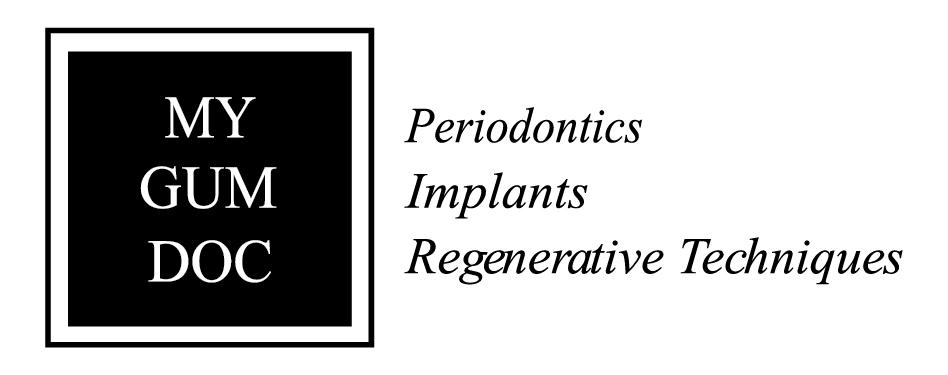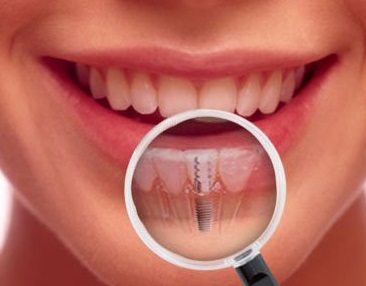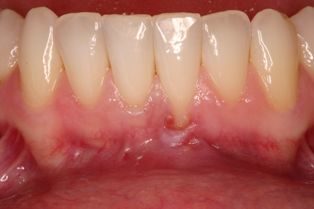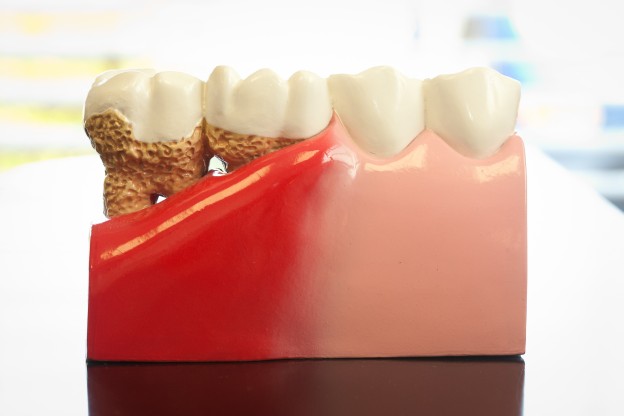Dental implants are an excellent way to replace missing teeth and have become the standard of care in dentistry. They have an excellent long-term success rate and patients who have them report a high satisfaction rate and in some cases even an improved quality of life!
Basically a dental implant is comprised of three different parts: the titanium root replacement or post (it looks like a screw), a crown that goes on top replacing the tooth that is seen in the mouth, and an internal part, the abutment, which helps to connect the crown to the implant post or screw. The implant post is not recognized by the body to be a foreign object and therefore actually integrates into the jawbone just like a natural root does. This process is known as osseointegration and is a large reason why implants are so successful.
Here are the top five reasons to have a dental implant:
- They have a high degree of function in that they feel and act just like natural teeth! Foods can be enjoyed and chewed as if the dental implant is a tooth. A high degree of function is what gives people quality of life. Being able to eat and chew food without worry provides such a peace of mind whether eating at home or dining out socially.
- Implants can have a very natural appearance. Dentistry is both an art and a science and dental implants are no exception. They should function well and at the same time, have a very natural and pleasing appearance. For front teeth, dental implants are an excellent way to replace missing teeth! Implants also help to preserve your appearance. Missing teeth cause your jawbone to deteriorate or shrink which then can have your face appear sunken in. This effect can make you look years older than you are. The implant post actually provides the stimulation your body needs to produce dense, healthy jawbone and keep your face looking full and youthful.
- Stop your teeth from shifting into the empty space. When you lose a tooth, the surrounding teeth will eventually begin moving to fill in the space. This then causes a cascade of dental complications. This shifting of teeth can cause a collapsing bite which can lead to jaw joint issues with symptoms being difficulty in chewing, sore jaw muscles and headaches to name a few. Placing a dental implant now will stop these effects and make it easy to have better oral foundation health.
- Implants can be minimally invasive. The other option of replacing a missing tooth is a restoration called a bridge. A bridge involves cutting down the teeth adjacent to the missing tooth space, thus weakening these teeth. In addition, the adjacent teeth also are taking on the biting pressure of the missing tooth. And should the teeth that support the bridge fracture or get tooth decay, the whole bridge is at risk of being lost! And then it’s replacement is another phase of more costly dentistry. Lastly, the jawbone under the part of the bridge where the tooth is missing shrinks over time due to nonuse. Should you ever need or wish to convert the bridge to treatment with an implant, this area of bone may need more extensive grafting to receive an implant.
- Dentures and removable partials can be replaced with implants. This may be one of the very best reasons to have dental implants! The list is long with complaints and complications about removable appliances: poor fit, sores from rubbing, anchor teeth being loosened or destroyed, sunken lips, and food restrictions. There are various procedures available and some even support a full arch of prosthetic teeth with as few as four implants. If you wear dentures or partials, placing a few implants under them to “snap” into or be more permanently fixed to implants can really improve your quality of life!
To learn more about the many benefits of dental implants, the Academy of Osseointegration is a great resource! Also, we would be happy to help you learn more about your specific need for implants. We have a very high success rate and have been helping people for 20+ years enjoy their new smile and have better function with dental implants. You can learn more here.



 Are You Causing Your Own Gum Recession?
Are You Causing Your Own Gum Recession?
